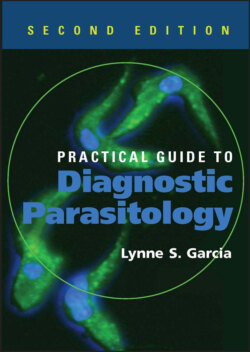Читать книгу Practical Guide to Diagnostic Parasitology - Lynne Shore Garcia - Страница 71
На сайте Литреса книга снята с продажи.
SECTION 3
Collection Options
ОглавлениеVarious collection methods are available for specimens suspected of containing parasites or parasitic elements (Table 3.1). The decision on the method used should be based on a thorough understanding of the value and limitations of each. The final laboratory results are based on parasite recovery and identification and will depend on the initial handling of the organisms. Unless the appropriate specimens are properly collected and processed, these infections may not be detected. Therefore, specimen rejection criteria have become much more important for all diagnostic microbiology procedures. Diagnostic laboratory results based on improperly collected specimens may require inappropriate expenditures of time and supplies and may also mislead the physician. As a part of any continuous quality improvement program for the laboratory, the generation of test results must begin with stringent criteria for specimen acceptance or rejection.
Clinically relevant testing also depends on the receipt of appropriate test orders from the physician (Table 3.2). The laboratory is not authorized to order tests; this function is the responsibility of the physician. Depending on the patient’s history, very specific diagnostic tests are recommended. It is very important that physician clients become familiar with the test order options available from the laboratory testing menu. They must also have an understanding of the pros and cons of each test when considered within the context of the patient’s symptoms and clinical history. Without the appropriate test orders and collection procedures, test results may be misleading or even incorrect. It is important for the laboratory to provide appropriate and complete information to all clients in order to ensure quality patient care.
